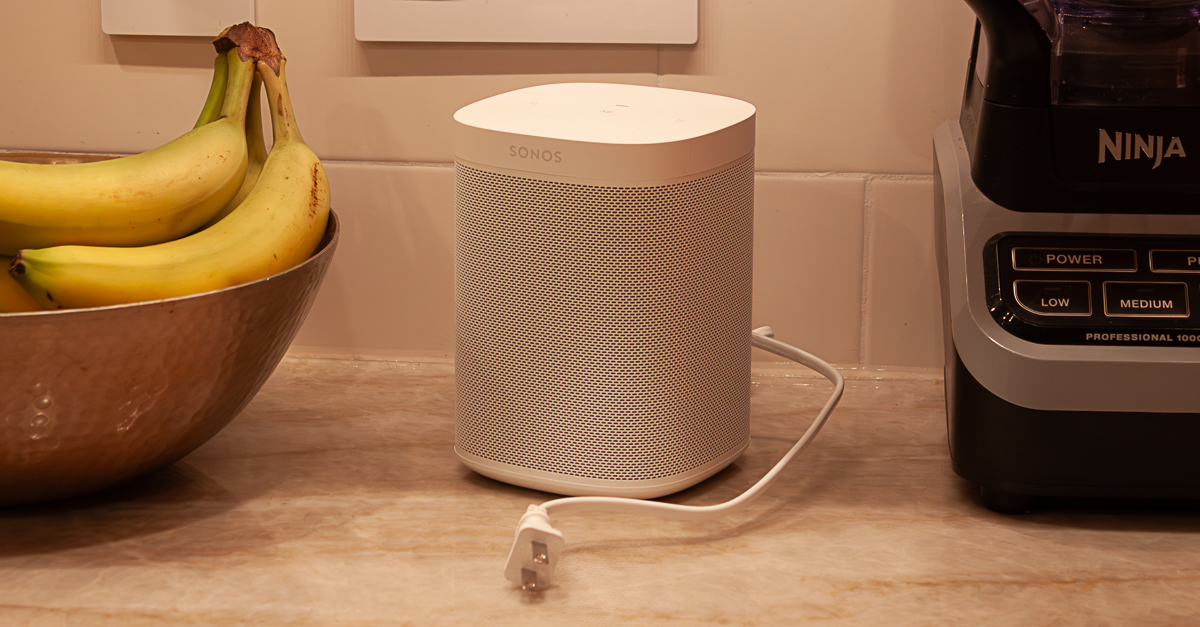I’ve noticed that my house is a lot quieter this fall. It’s not just that the kids are back in school; it took me a bit to realize that I’m not hearing music anymore.
We have Sonos speakers all over the house. Over the past decade, they’ve slowly infiltrated everywhere. It’s been great: It’s one of the few products that everyone takes advantage of without being forced. A true testament to usability - everyone had a phone, we have Spotify family and a media server full of the music everyone likes, so it was just the easiest way to listen to whatever you wanted.
Tonight, I went to pick out music for dinner, and since we have a “no phones at the table” rule, I had to get it done before I sat down. Unfortunately:
- Spotify couldn’t see the kitchen speakers.
- Sonos has stopped talking to Plex.
- Sonos had indexed our media server, but there isn’t a browse by letter so you have to search - and searching for classical music is almost pointless.
I gave up after a minute of everyone else sitting at the table staring at me, messing around with the phone, getting more annoyed by the second.
We ate dinner without music.
It then hit me - it’s been very quiet in the house lately. I asked around the table, and folks have largely given up on Sonos. Instead, they use their headphones and play content from their phones.
Even if you’re not a customer, you’ve probably heard of the self-inflicted disaster Sonos caused with the new software platform they rolled out in March. It’s still a train wreck half a year later. The high-profile problems of dropped functionality have gotten the most attention in articles, but the real sin is a failure of the core mission: Effortlessly finding and playing music wherever you are in your house.
While Sonos has spent the last five years trying to integrate voice assistants, create their own streaming services, and push always-connected features, they’ve forgotten who their true competitor is. It’s not Klipsch, JBL, Beats, or any other wireless speaker makers - it’s headphones. You already have your phone, and you almost for sure already have headphones. So the default option when you want to listen to something is use them.
For folk to pay the substantial premium for Sonos speakers, they must be more convenient than personal headphones. If Sonos loses this, they’re consigned to the small corner of high-end audio where paying upwards of $2,000 for surround sound or $800 for an amplifier is normal.
Who are your real competitors?
When we were conceiving Loupe (our Logging & APM product) we knew our biggest competitor was Notepad. Sure, we also had to convince folks to pick us over other logging products like DataDog or Seq but the overwhelming majority of potential customers had no solution, or just used Notepad to view text logs. We needed to convince them that Loupe was so much better it’s worth using something that doesn’t come for free and by default on every computer you touch.
For any company, there are three classes of competitors:
- Peer Products: The other companies and products that compete in your space - your traditional “competitors”.
- Generalist Solutions: Notepad, Excel, Email - universal tools with wide availability that can be “good enough” at solving what you tackle.
- Do Nothing: It isn’t likely existential that a customer must have a solution. They could write down things on paper or a whiteboard or not reach for a tailored solution.
Keeping Competitive in Growth Mode
At the top of each company, most of the focus is on driving growth - increasing market share, opening new markets, and improving margins. The everyday blocking and tackling it takes to guard your existing revenue will, by default, not be the topic of conversation. When the focus between you and your Board is on how to grow, it’s easy to ignore the fundamentals that support your base.
I’ve walked into several situations where a small fire has grown into an inferno that’s about to burn everything down - and it was ignored because it was couched in the language of optionality like “technical debt” or “maintenance.” By the time it was apparent something had to be done, the company was well on the path to failing.
Going back a few years, Sonos was so overwhelmingly successful in their market that they focused on new services and markets to keep expanding the company and profits. I can imagine that the Board viewed hardware sales and profits as their birthright and pushed leadership to focus on new and sexy - not realizing how fragile their base is.
You need to devote communication time when managing up and out to the core of your business - the real competitors you have to fight. You must make a compelling case to your customers: why pick you over doing nothing, and why choose you over the general purpose option.
Explicitly recognizing this and devoting communication time to it - with all your business stakeholders - helps reframe conversations throughout your company. Treating “How we keep beating Headphones?” as a peer problem to “How do we win in X new market?” you’re aligning organizational focus across new and existing revenue.
Inertia Cuts Both Ways
Once folks stop using your product and find out they’re just fine, how likely are you to win them back? It’s been six months, and all the fixes in the world aren’t likely to bring most of my house back into the fold with Sonos. They’ve changed their habits and found a new normal. Just like inertia before kept them using the product after they started carrying around headphones in their pockets every day, now inertia keeps them from coming back.
For Sonos, the loss here will be more than one failed product launch (their headphones, ironically) and likely an abysmal holiday season - they could find their market collapses because $249 Air Pods beat $200 wireless speakers that don’t work each and every time.



